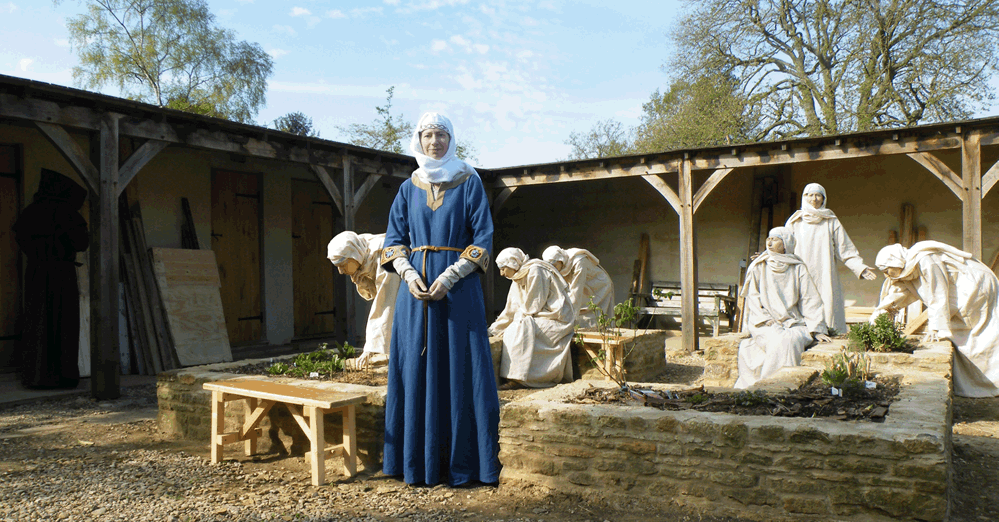
Rumwoldstow is a historic reenactment / living history project based around a fictional Anglo-Saxon monastery dedicated to our local saint Rumwold. At the project’s heart are a cloister, garden and orchard located near Banbury which represent an early tenth century monastery in miniature. We’re setting up a local reenactment group for crafts, living history and roleplaying. If you live nearby and are interested in getting involved, please contact us by email:
info (at) rumwoldstow.org
In our story, Rumwoldstow was refounded in 916 AD on the site of an earlier minster that was sacked by Vikings, perhaps in 914 AD. We are tracking the tenth century against modern years, so 2016 AD corresponds to 916 AD in the story of Rumwoldstow. We plan to build up resources to describe Rumwoldstow and its history, such as a founding charter and monastic rule.
In our story, Rumwoldstow is a monastery of women. The Anglo-Saxons used the word ‘monastery’ or ‘minster’ for for establishments of both men and women; they did not use the word ‘nunnery’. Please note that we welcome people of any gender – there are priests, craftspeople and lay folk as well as nuns at Rumwoldstow. If you’re more interested in the Vikings than Anglo-Saxons, that’s fine too; there was a strong Viking presence in Mercia at this time and it’s very much part of our story.
Latest posts from Rumwoldstow
- Baked quince is better
Last year the quince tree was sad and gave us no quinces, despite having produced a small crop the previous year (about 4). But this year, it grew lots of lovely quinces! I have been distracted this autumn and didn’t manage to harvest most of them, but I did gather a nice basket of them and have been pondering how to cook them. I learned from a friend that there are Greek recipes for meat with quince, which I would like to try, but someone else I met last week said “just cut them into segments and bake them with cinnamon” so I tried that, and om nom nom!
I cut off the manky bits but didn’t peel them, as advised, cut them into eighths lengthwise and cut out the core. Not peeling them is a big process improvement! A raw quince is very hard and peeling is a lot of work.
I shoved the fruit in a dish, sprinkled it with cinnamon and distributed a teaspoon or two of honey around. Into the oven at 180 C for about 25 minutes, stirred round halfway through to coat the pieces in the honey.
Have I adjusted to the taste of quince? I dunno, but when I poached quince in syrup in previous years, it was ok, a bit odd… but I find the baked quince yummy and am really pleased. The cooked peel is perfectly eatable. Another time, I may serve unsweetened quince as a side dish with a meat.
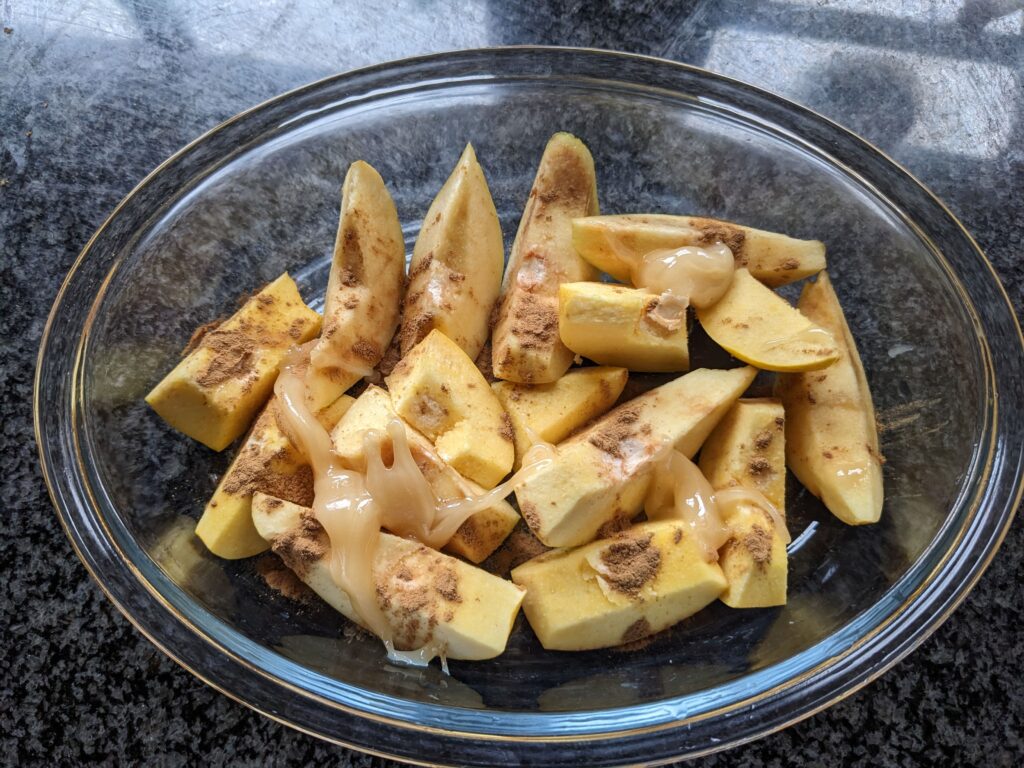
Ready for the oven 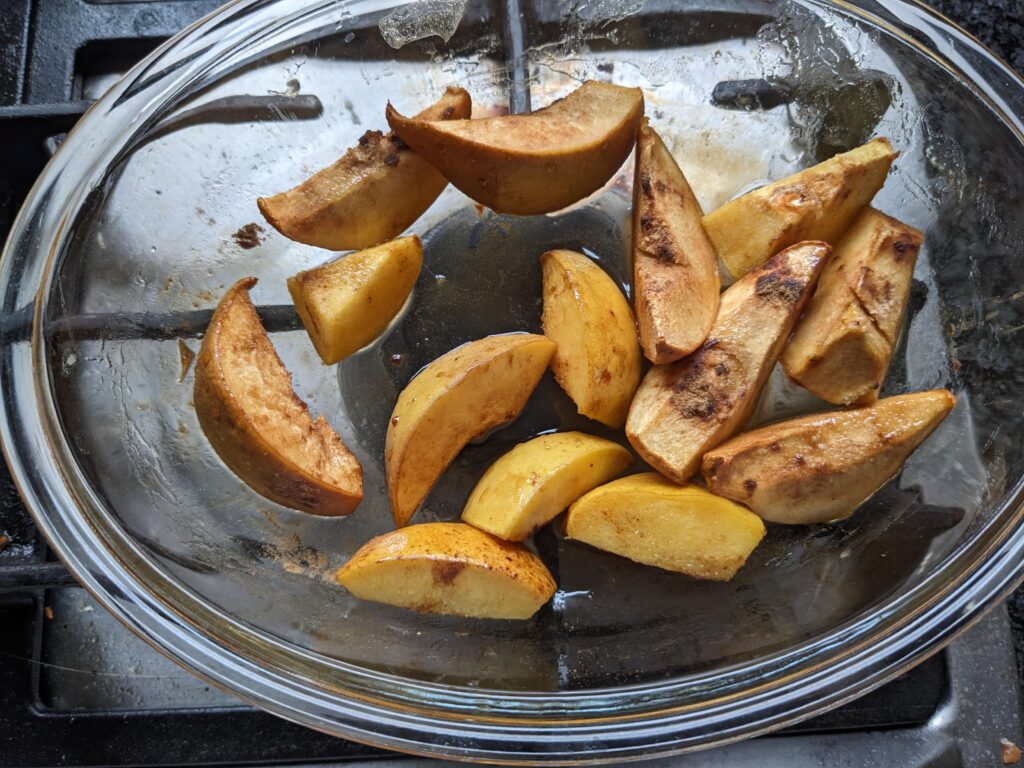
Ready for my tummy! - Meadowsweet mead
It is late July and the meadowsweet is in full flower. Many years ago, I made meadowsweet wine and it was good, so now I’m having a go at a mead. I read that:
…the name is in fact a corruption of the old medieval name “meadesweet”, stemming from the days when the plant was added during the brewing of mead, as a flavouring agent.
https://pharmaceutical-journal.com/article/opinion/the-anti-inflamatory-properties-of-meadowsweet
Various parts of the plant have been used medicinally for centuries, primarily for the relief of pain and fever, but other uses have included the treatment of gastrointestinal complaints, including peptic ulceration, and the treatment of diarrhoea. Its anti-inflammatory effects can be accounted for by the fact that all parts of the plant contain several salicylate compounds, including salicylic acid itself. In 1897, when Felix Hoffmann produced acetylsalicylic acid, he used salicin produced from meadowsweet plants. This led to the development of the brand name Aspirin, which was derived from the botanical name at the time for meadowsweet, Spiraea ulmaria.One may hope therefore that this mead will be its own hangover cure.
However from the same source I note:
Because of the high levels of salicylates, preparations containing meadowsweet extracts are contraindicated in patients taking warfarin, and also in those already taking non-steroidal anti-inflammatory drugs. Extracts of the plant have been to cause bronchospasm, therefore caution is advised in its use by asthma sufferers.
…which is kind of important information…oh hear this, ye “it’s natural so of course it’s safe” brigade…
I foolishly gave away my copy of C J J Berry’s indispensable “First Steps in Winemaking” so I am not working to an exact recipe. I gathered a small basket of open flowers, and have boiled 5 litres of water which is now cooling.
My next job is to empty 6 jars of local set honey (340 g each, for a total of 2.04 kg) into the pan, and when it’s tepid, add the meadowsweet and yeast. I’ll be using Mangrove Jack’s Mead Yeast, same as I used for the apple and medlar mead that I started back in January of this year (2024 / 924). Yes, for a truly authentic brew I would rely on natural yeasts, but I haven’t the confidence.
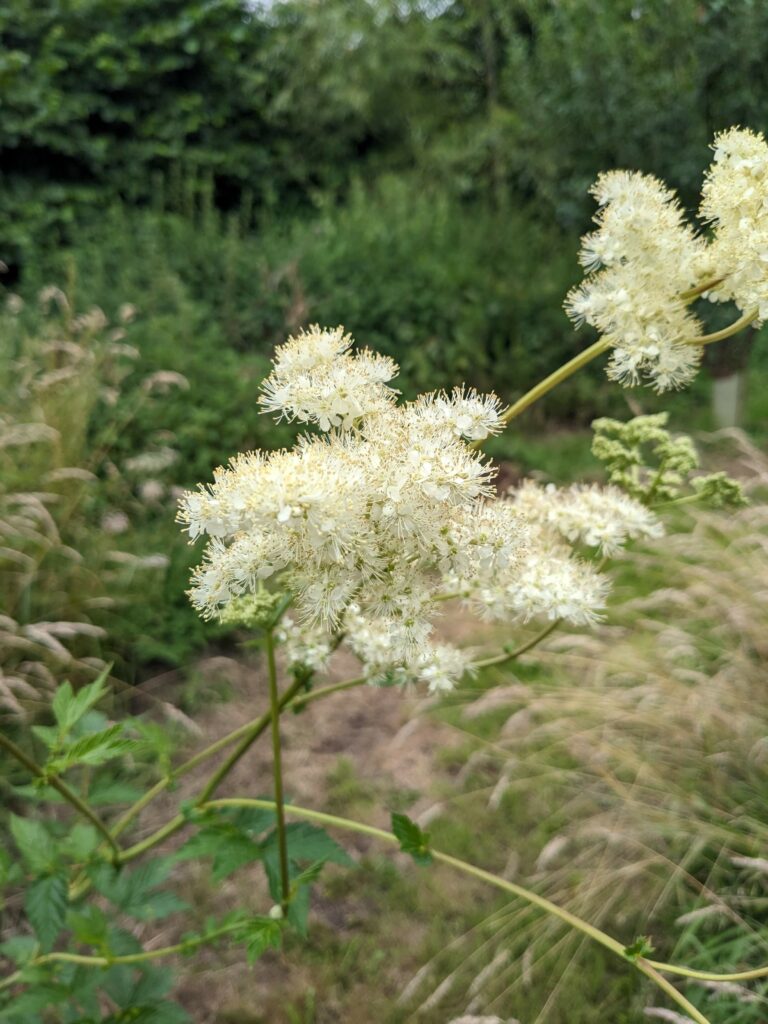
Meadowsweet close up 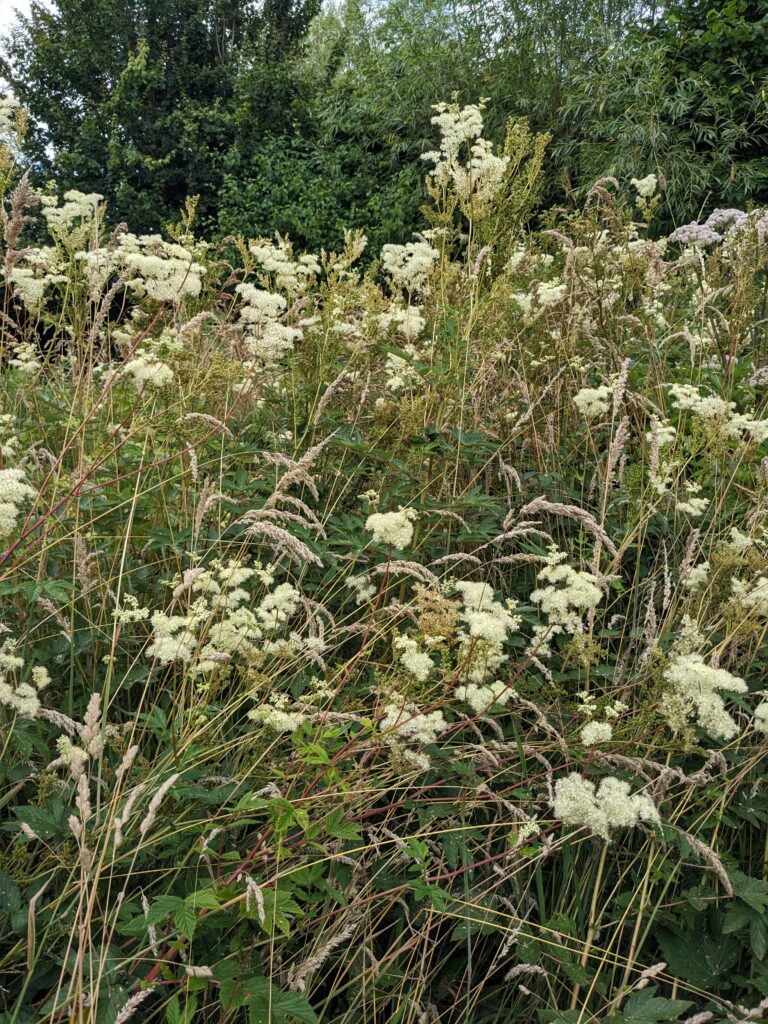
Meadowsweet in the orchard 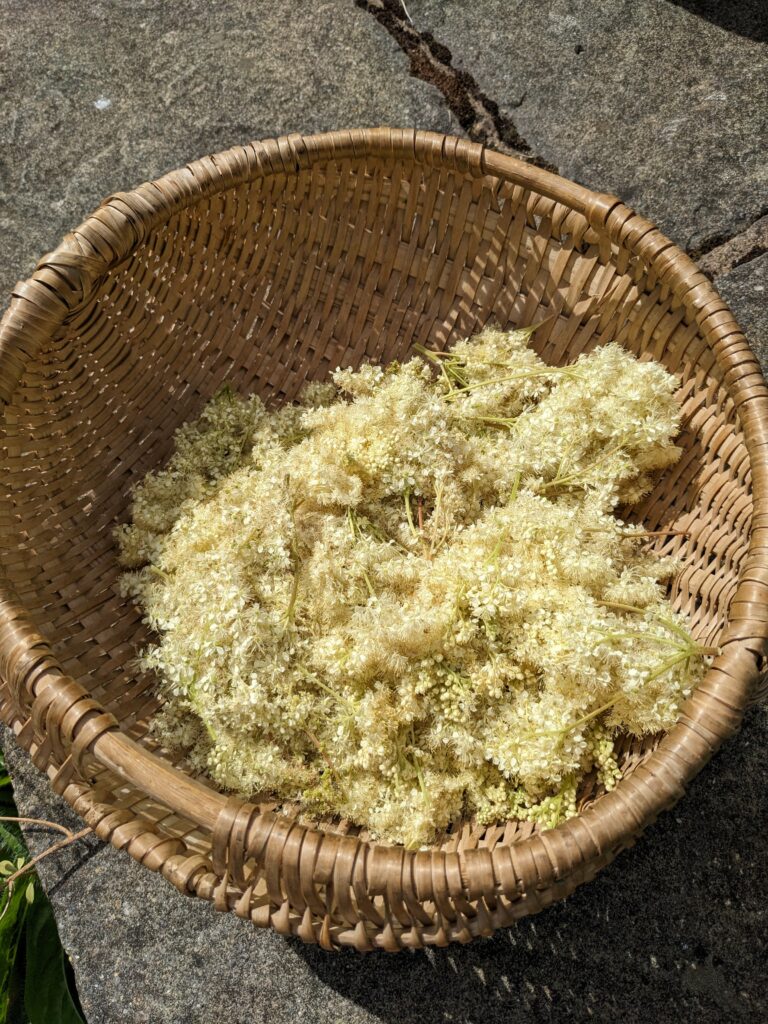
Meadowsweet in the basket - Dinner from the new oven
Having briefly tested Al’s amazing new wood-fired bread oven, we tried it out more thoroughly a few days later.

The oven in use! With the ambitious plaited loaf just visible 
Rack of lamb and sausages cooking in a cast iron skillet. Fast and good. 
The master baker with an ambitious sweet plaited loaf ready to go in 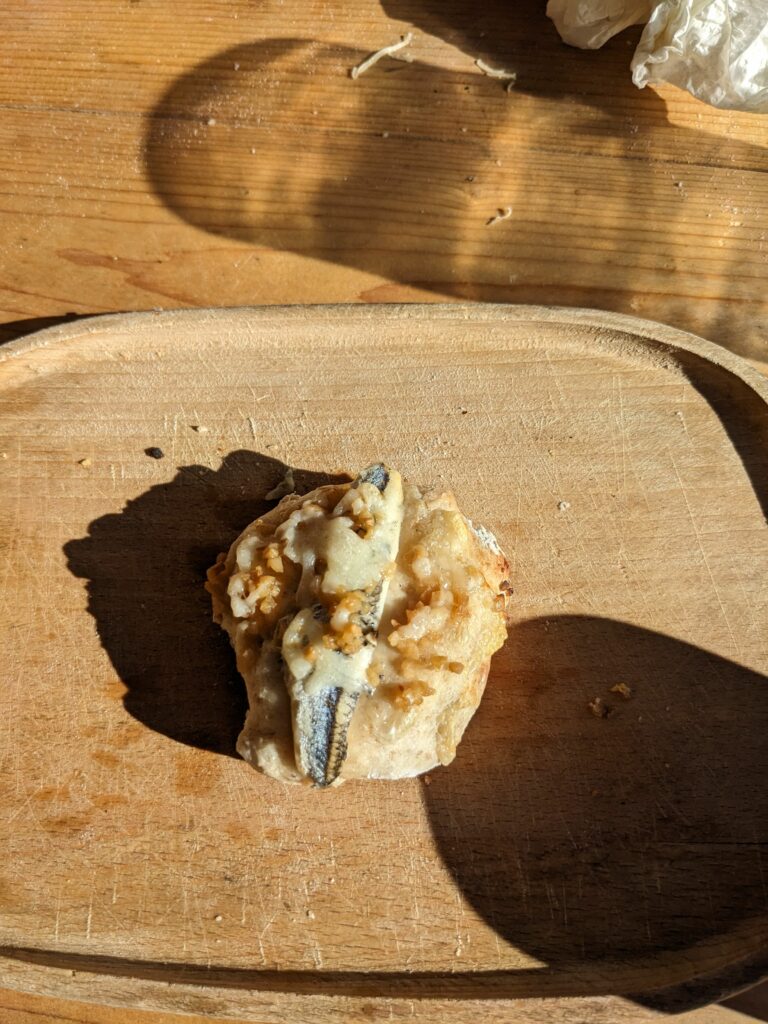
My baking skills extended as far as the single-anchovy mini pizza with chopped garlic, leek and cheese. 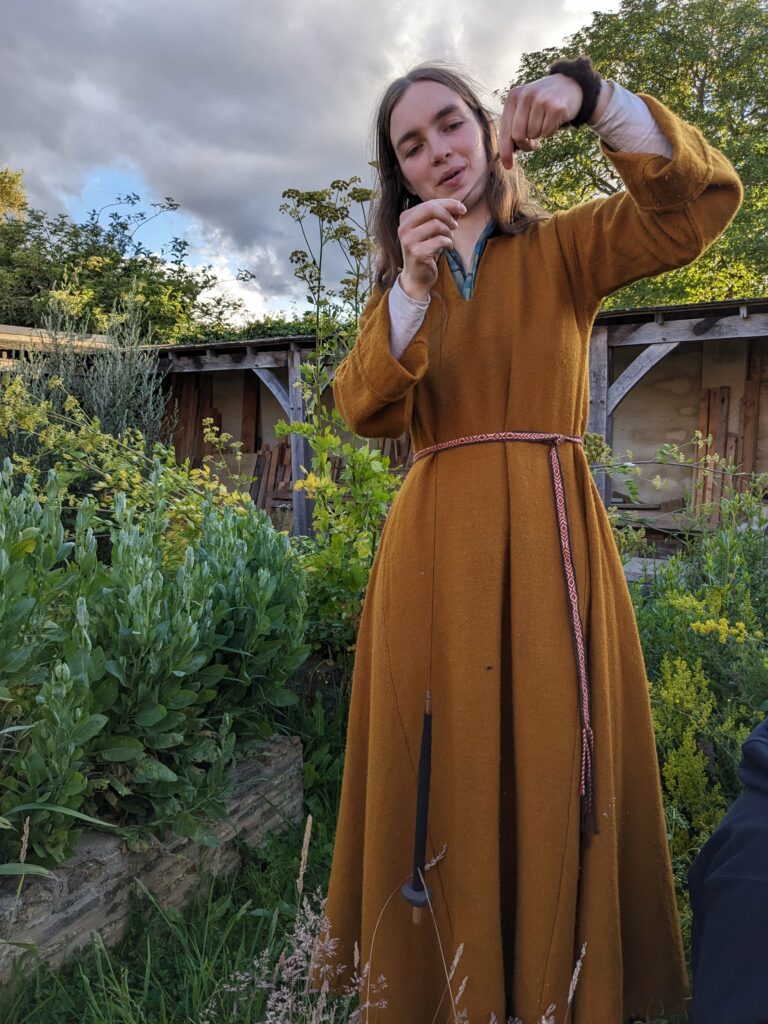
Aelfrun spinning 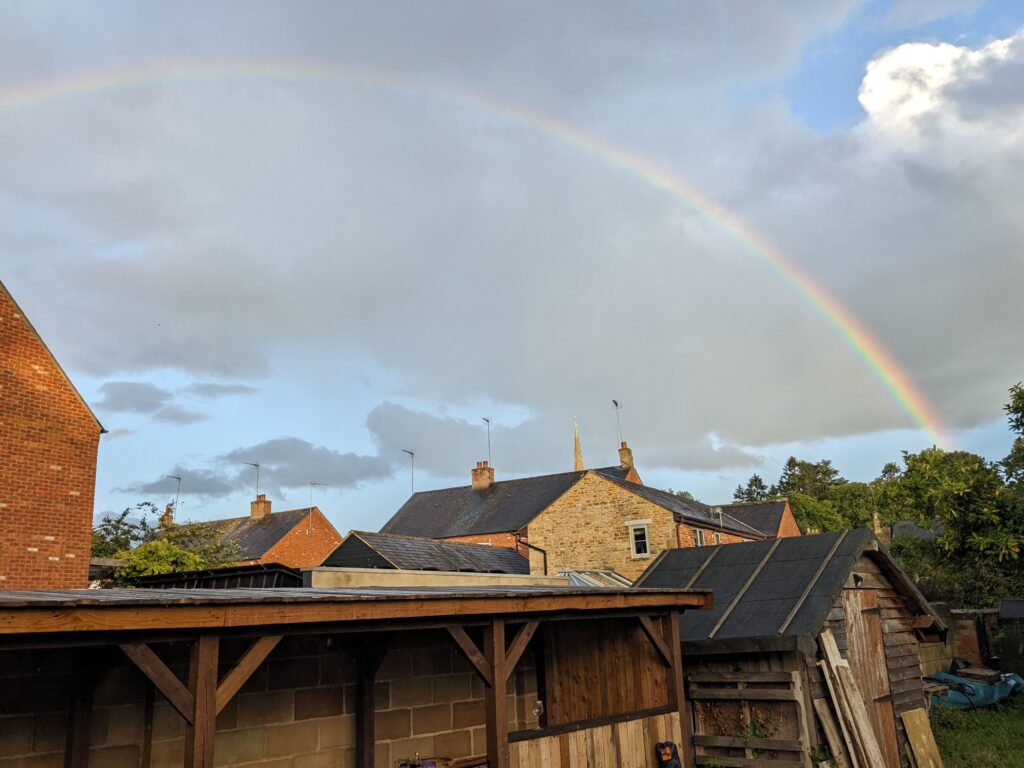
Our final reward – a complete rainbow - First Firing
Al has built the Roman-style bread oven! Or as you might describe it, a budget pizza oven off the internet, mahoosively gussied up with fancy stonework, extra insulation and render. It had its first firing on the 4th July, basically to dry it out and see how well a fire would burn and heat it. Just so we cooked *something*, I mixed up some scone dough and stirred in a handful of dried raisins.
Modern scones are quite inauthentic as baking powder was Not A Thing in the early medieval days. Breads would be unleavened, or raised with yeast. And they were a bit burned in places, and slightly underdone in others. But fresh out of the oven with some medlar jam, they were delicious.
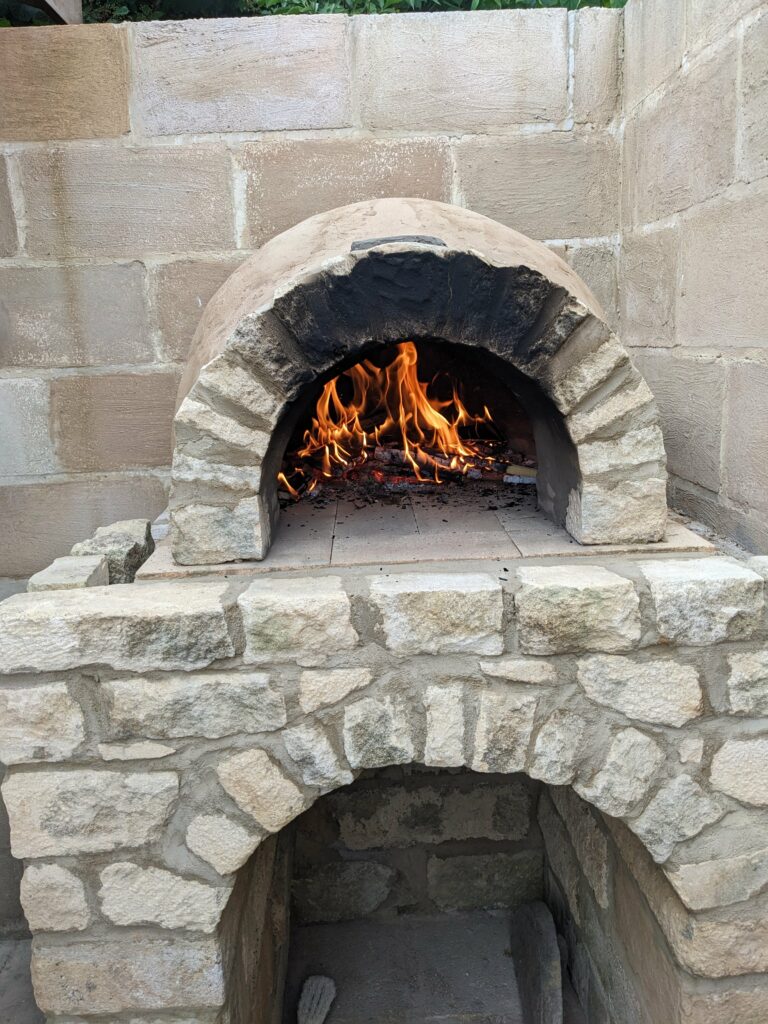
The oven with its first firing! 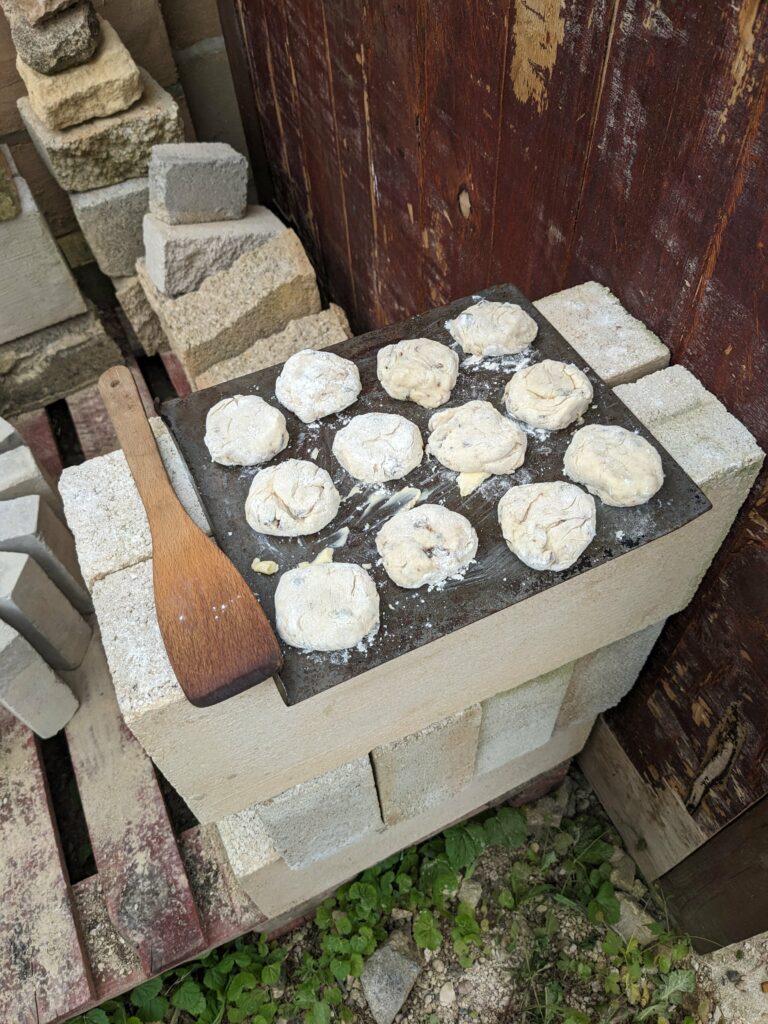
Scones ready to go in 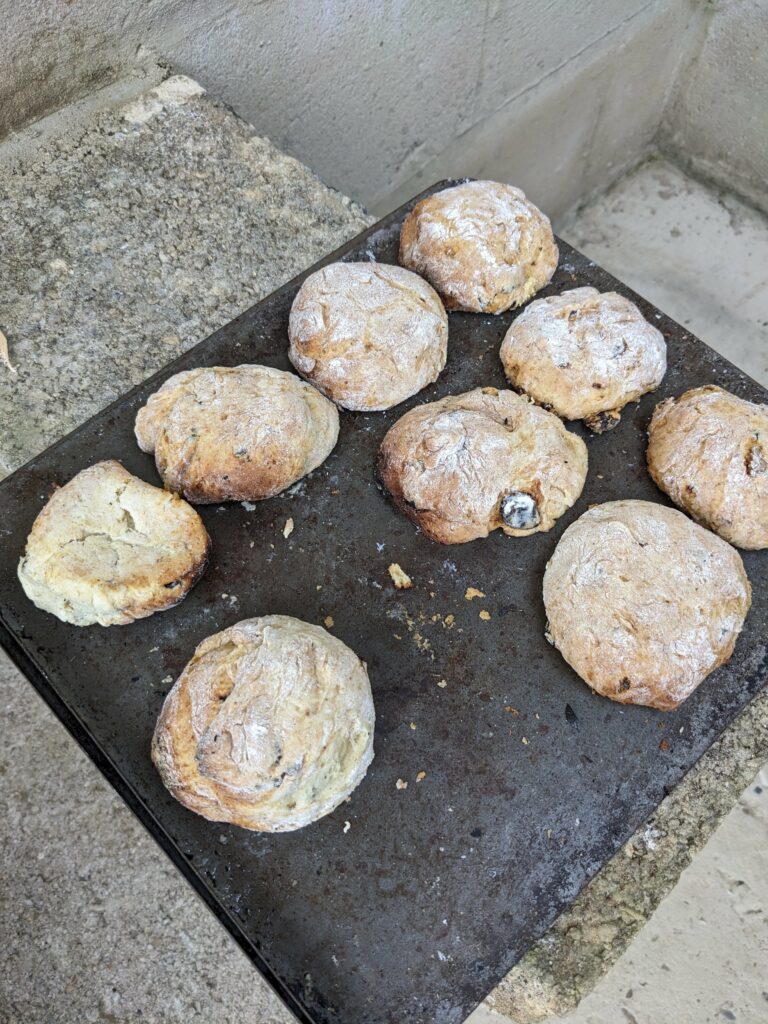
Scones fresh from the oven 
Scone? S’gone. - Five flowers
The blossom on the first seedling to produce flowers has opened. Some sixty-ish seedlings are NOT flowering, and vary between Nothing and Lots Of Leaves. But this Gala pippin is giving it a good go. Here’s a photo from a couple of days ago.
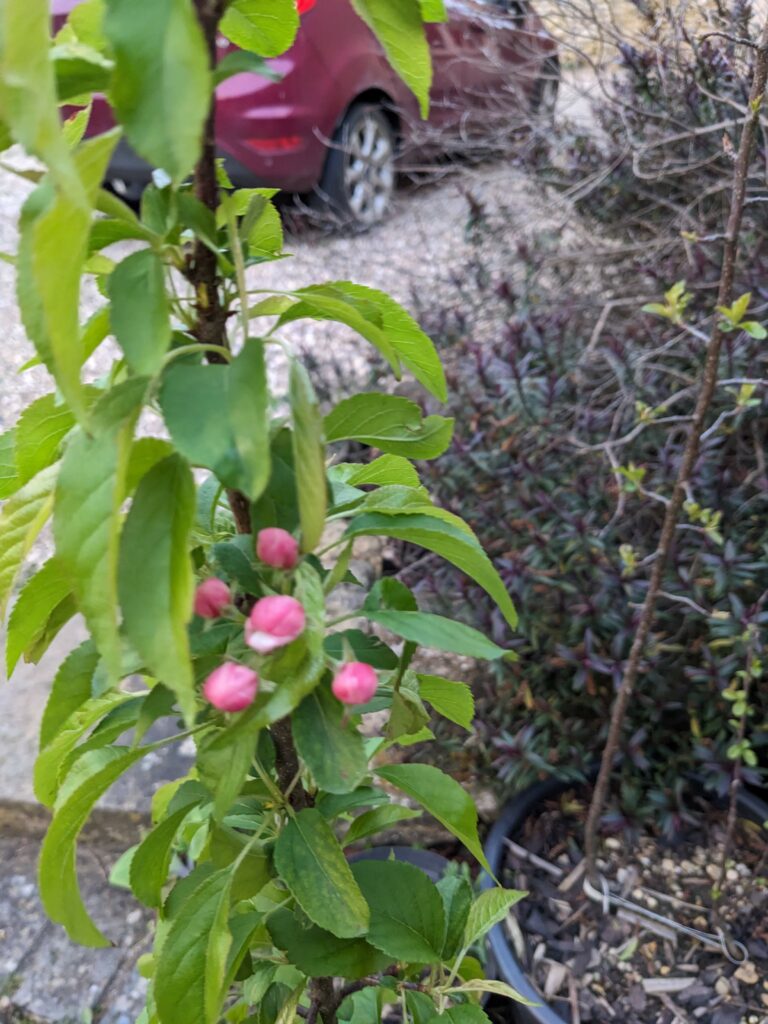
Gala pippin’s first blossoms, Tuesday 9th April 2024 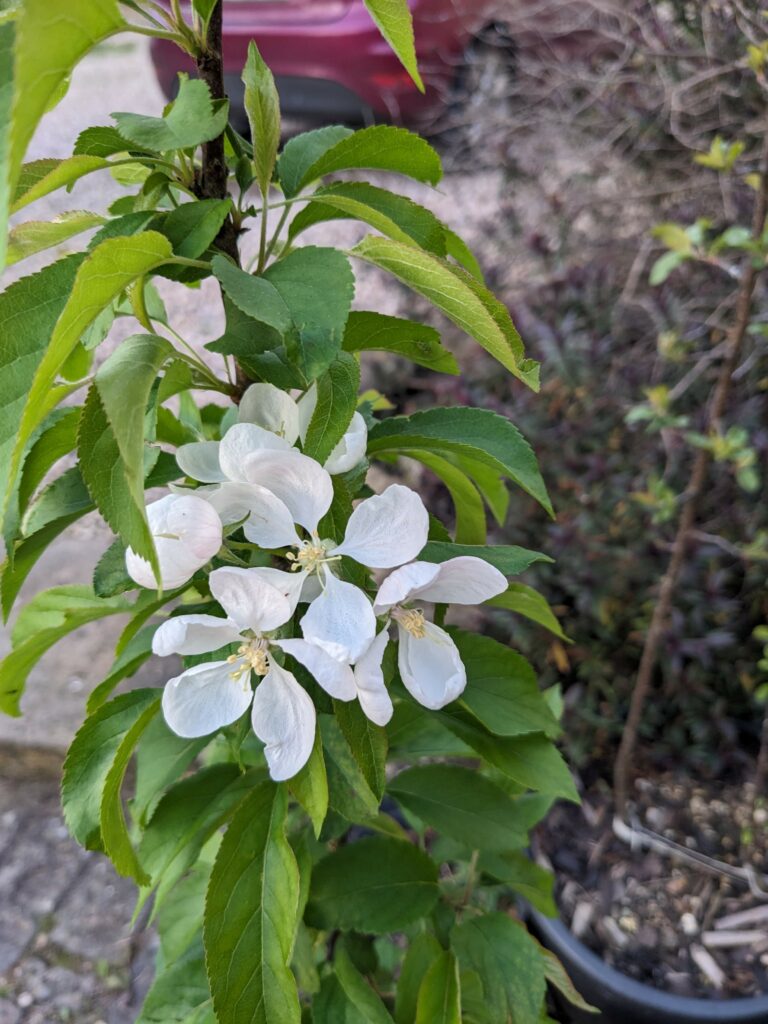
The same blossoms, Sunday 14th April 2024 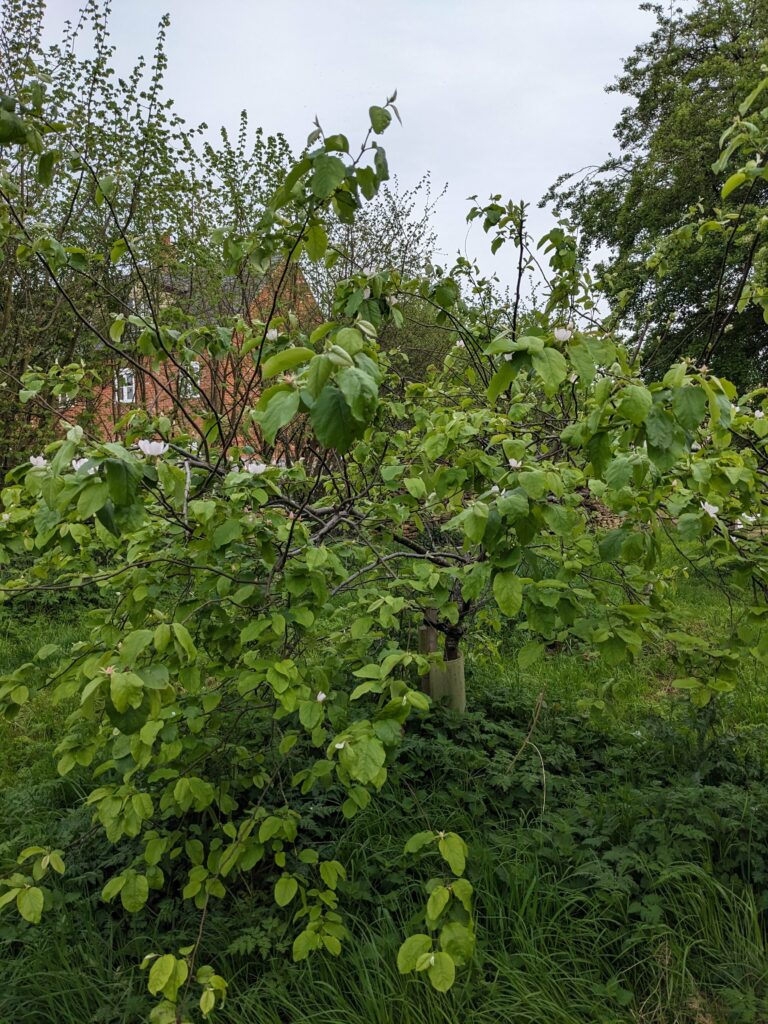
The quince tree is starting to flower (mainly on the west side) 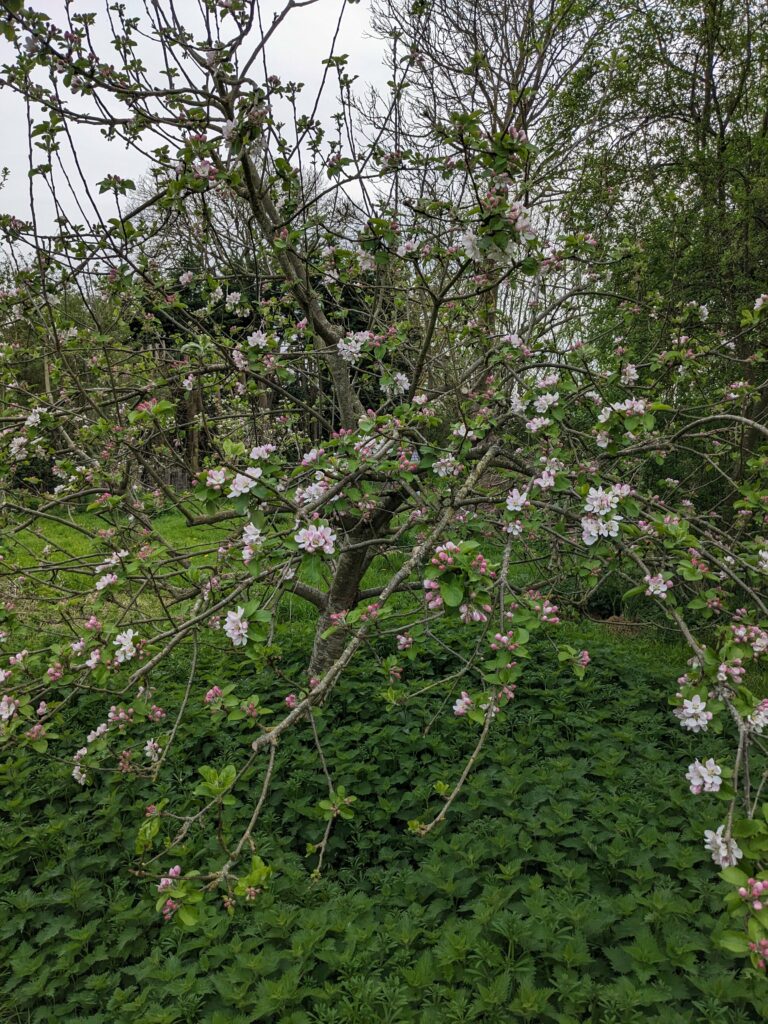
The established apple tree (variety unknown) is also in bloom 
Local menace Tinky come to tell us what’s what